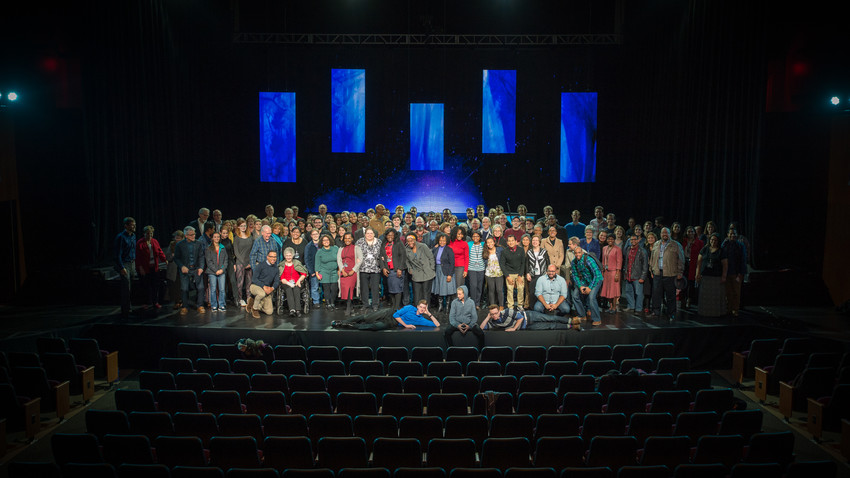On Monday morning my beloved mother (Barbara Watts Nelson Rienderhoff) peacefully fell asleep in Jesus while resting at her home in Banning CA. The attending nurse remarked that it was as peaceful a way to die as you could wish. She was 88. I’m so grateful I got to spend three days with her on her birthday just before Thanksgiving. Her condition deteriorated rather rapidly in December. My sister Kari flew down from Sacramento twice the week before Christmas to be with her. And while we with our brother Greg and her husband Bert grieve Mother’s death, there is relief in knowing her suffering is over. For her it will be a split second between her last moment of cognition and gazing up into the spectacular panorama of Jesus in the sky, calling His friends to rise. Oh happy day of reunion!
You would’ve loved her, too, had you known her. What was she like, this woman who survived my childhood? Let me share seven of life’s great lessons I learned from my mother, and you’ll get the picture:
1. Remember three rules—read, read, read. Mom was a voracious reader, and she stimulated our appetite for good books from the beginning. In a land where children’s books in English were a rarity (she and Dad were missionaries in Japan where all three of us kids were born), she managed to find the childhood classics, and we read all the time. Junior Guides came by ship from America—we devoured and preserved every issue, eventually binding them into books for rereading. I learned to love reading because of my mother.
2. Learn to love music—it is a beautiful thing. (It’s the practicing that’ll kill you!) And oh boy, did Mom make us practice. Relentless, sometimes merciless—she was our first piano teacher, along with trombone (me), trumpet (Greg), and oboe (Kari). Born with a beautiful contralto voice, she sang at the end of Dad’s sermons all across Japan. She loved music, and music loved her.
3. Never forget God has a purpose for your life. By the age of ten I had nearly died twice (stories for another time). I can’t count how many times my mother drew me aside to remind me, “God has spared your life for a reason—He has something special for you to do.” I grew up with that compound sentence. And because of her conviction and her faith, I ended up one day actually believing her. If you’re a young mother, memorize that sentence and whisper it to your child—because it will be always be true—and one day your child may very well turn out to be true to it.
4. A domesticated mother is a wonderful gift. My mother was an award-winning cook, baker (Sabbath morning sticky cinnamon rolls [to die for]), nurse, seamstress, PE coach, handywoman, boss, and queen of the castle. In a day where perhaps such giftedness is becoming rarer, God bless the mothers who embrace the divine mission of providing for, protecting and preserving a brood of children for society and the Kingdom.
5. A liberated mother is a wonderful inspiration. While it’s true Mom was more exceptionally domesticated than the TV Mom’s we watched in black and white, she embraced her God-given uniqueness as woman and colored outside the box. Somehow she became acquainted with the producers at a local television station in Toyama (a large city in which an American woman was a standout). And before long she was hosting a weekly television program fluently in Japanese (we kids with Dad even got to be her guests once!). Using her unique, God-inspired gifts, coloring outside the box, ministering as a woman—a liberated woman is an inspiration.
6. Be a learner all your life. My mother was Exhibit A that this must be God’s intention for us all. Whisked away by Dad before she could finish nurse’s training—off to Japan and mission life—good-bye schooling—but not Mom. On our second furlough, she enrolled in a school of business to study office administration. Then with her kids finishing college, she found a school that offered her life experience credit and eventually graduated with her Bachelor’s. Before long she was enrolled in Loma Linda University’s off-campus Master of Public Health degree, graduating at the same time Kari graduated from college. Then with her MPH Mother established a community health clinic in Portland OR, for which she was feted at a downtown hotel with a Community Services award. Always learning and growing, you go, Mom!
7. Be friends with God. I not only learned about prayer from kneeling beside my mother mornings and evenings—I also learned from those early mornings when I’d peek around a corner to find my mother alone, quietly reading and marking her Bible and praying. When I would look inside her Bible at the markings and writing in the margins, I instinctively knew—she never had to tell me—how important this personal daily commitment truly is. For her, religion was a friendship and prayer a conversation. How many times when I was in college was she pouring her heart out in intercessory pleadings for me, as I later learned, at the very time the battle for my own heart was raging. She knew Jesus—and He knew her—and therein was the secret to her loving heart and fruitful life.
Ellen White describes the reunion one day in heaven: “Many will raise their crowns in sight of the assembled universe, and pointing to their mother say, ‘She made me all I am through the grace of God. Her instruction, her prayers, have been blessed to my eternal salvation’” (Reflecting Christ 195). To which I bow my head this day and whisper, “Amen.”









